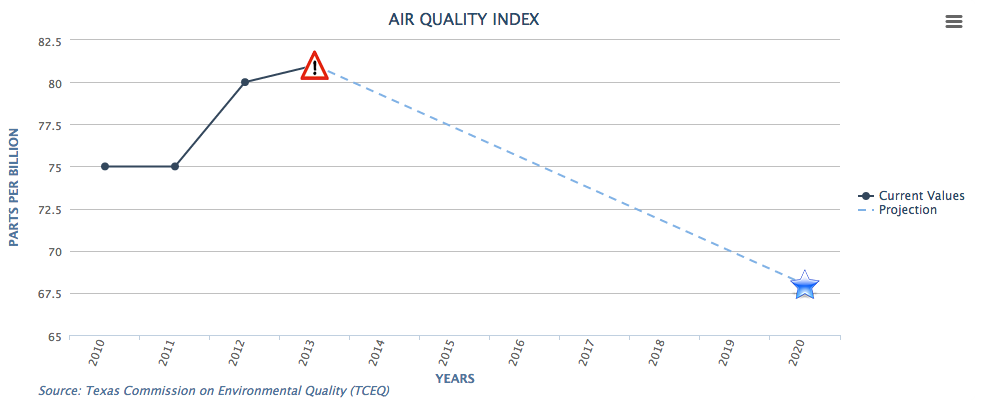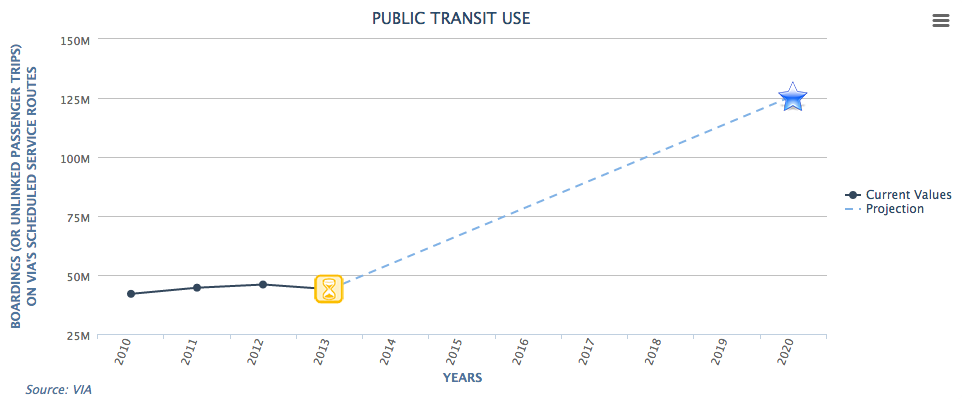We posted a version of this in May 2014 when rideshare was being publicly debated. Now that it’s being voted on, we thought we’d update it and share our thoughts, again.
Depending on our needs these days, the SA2020 team has been known to use the following modes of transportation in our fair city: bikes (shoutout B-Cycle!), public transportation (shoutout VIA), our trusty steeds (also known as cars), taxis (‘cause who leaves their cars at the airport?), and our feet (did you see us represent at the Rock n’ Roll marathon?!).
In fact, we care about alternative transportation. A lot.
And, apparently… so do you.
“In 2020, San Antonio’s transportation system is recognized as a model of efficiency and environmental sustainability. San Antonio is served by an environmentally-friendly transportation system where everyone is able to walk, ride, drive or wheel in a safe, convenient, and affordable manner to his/her desired destinations. Frequent and reliable mass transit services connect communities, and transportation infrastructure meets community needs.” These are your words from the planning and visioning sessions that act as our vision for the future.
In fact, two indicators for success in this area are: (1) decreasing vehicle miles traveled and (2) increasing public transportation use.
San Antonio is a diverse and growing city with all of the connectedness challenges that sprawling cities in the Southwest tend to face. We need to grow the number of smart transportation options and not restrict them. We are more than smart enough to figure out the right balance of regulation and the free market to address safety and security concerns, while ensuring fair business practices.
So… that brings us to the topic of the day (week/month), and it includes a pink mustache in one instance and the use of one of our favorite modifiers in another – Lyft and Uber.
On Thursday, city council will vote on rideshare, particularly as it relates to Chapter 33 of the City Code (Vehicles for Hire) regarding regulations on Transportation Network Companies. Regulation is important for safety and other reasons; however, it is also important that we make sure to create regulations that do not limit innovation or obstruct new business models, but allow positive change.
You may have heard that a few people feel very strongly about these ride-sharing services existing in San Antonio. You may have also heard one or another person reference the SA2020 vision when discussing this issue.
These people are correct in identifying transportation options as an issue definitively part of the SA2020 vision. But, rather than pontificate on the need for expanding our transportation options and not fearing change, we want to share some data with you…’cause SA2020 hearts data. And, really, “the more you know,” and all that. So, think about this:
- One car-share vehicle removes 9-13 personal cars from the road. (Elliot Martin and Susan Shaheen, “The Impact of Carsharing on Household Vehicle Ownership,” ACCESS, 38: 22-27, Spring 2011.)
- Carsharing has saved approximately 1.1 billion miles as of early 2013. (Susan Shaheen and Adam Cohen, Transportation Sustainability Research Center, Innovative Mobility Carsharing Outlook, June 2013.)
- After carsharing took off in Baltimore, 14 percent reported biking more, 21 percent reported walking more, and 11 percent reported using public transportation more. (Zipcar, After One Year, Zipcar Drives Transportation Change in Baltimore (press release), July 2011.)
Which brings us back to the SA2020 vision for transportation in San Antonio.
The SA2020 Progress Report in 2014 shows that public transit use is not improving at the rate we need it to and that vehicle miles traveled is actually getting worse. Additionally, we know that our Air Quality Index is getting seriously worse – which inevitably comes with the growth that San Antonio’s experiencing, but needs serious action to fix. The more cars on the road, the more pollution into our air.
If we truly want an “environmentally-friendly transportation system where everyone is able to walk, ride, drive or wheel in a safe, convenient, and affordable manner,” then that means we have to actively do things we think will get us there. We believe data like these are a good place to start figuring out what those things are.
We know that carsharing can help move us toward our collective goals for our community and our environment, because that’s what the data tells us (it’s our favorite non-partial friend). SA2020 hopes that these common goals can help us all swim (drive? walk? bike?) in the same direction: toward a world-class community that has figured out how to embrace change in the smartest and safest ways possible, because we understand that solving such problems starts with well-informed and inclusive strategies.
The foundation of SA2020 is collective impact—we know that our city’s complex problems cannot be solved in isolation, or by placing one group’s desires, perspectives or opinions above another. We have to be willing to all sit at the same table and identify the best strategies—which sometimes involve compromise, and sometimes involve the discomfort of change—to achieve our big dreams for our community.
So, who wants a ride to city council on Thursday?



